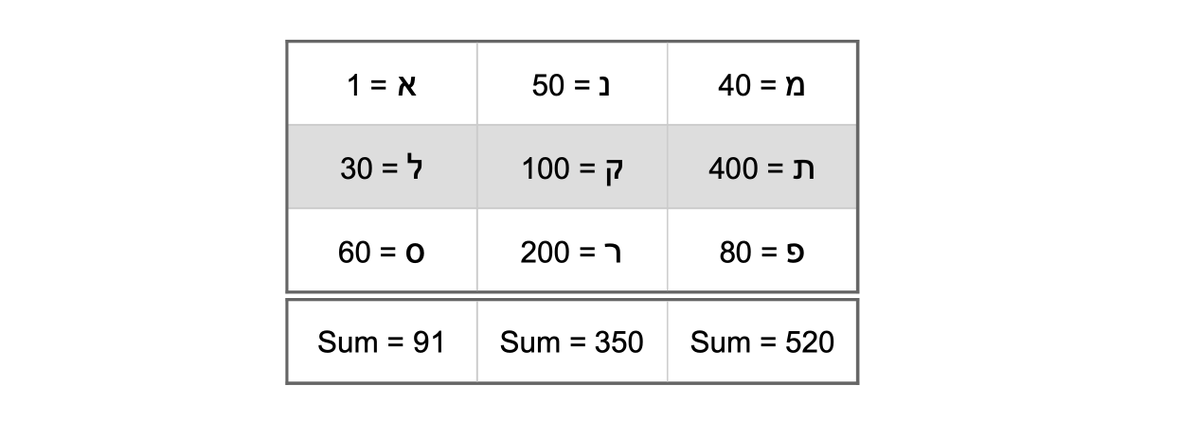
THREAD: Belshazzar’s Riddle.
SUB-TITLE: When I consider the work of your hands...
#Babylon, #Numerology, #MedoPersia, #Stargazers: what’s not to like?
Later, a substack link. As a taster, however, let me (try to!) intrigue you with some data.
SUB-TITLE: When I consider the work of your hands...
#Babylon, #Numerology, #MedoPersia, #Stargazers: what’s not to like?
Later, a substack link. As a taster, however, let me (try to!) intrigue you with some data.

The text of Daniel 5 is patterned around a whole array of threefold groups and structures.
It consists of three paragraphs and thirty verses.
It consists of three paragraphs and thirty verses.
It contains three notable triplets, namely:
✅ Daniel’s trio of attributes (‘light, insight, and wisdom’),
✅ Daniel’s threefold ability (‘the ability to interpret dreams, explain riddles, and solve problems’), and
✅ Daniel’s trio of attributes (‘light, insight, and wisdom’),
✅ Daniel’s threefold ability (‘the ability to interpret dreams, explain riddles, and solve problems’), and
✅ Belshazzar’s threefold reward (‘to be clothed in purple, adorned with a gold chain, and made the third most powerful man in the kingdom’), which, of course, is mentioned three times.
And the chapter comes to its climax with a nine-fold condemnation of Belshazzar’s idolatry,
And the chapter comes to its climax with a nine-fold condemnation of Belshazzar’s idolatry,

…at which point Daniel presents his solution to Belshazzar’s riddle,
which is similarly threefold in nature.
It’s predicated on a nine-syllable utterance (Meneh Meneh, Tekel, and Parsin),
which Daniel distils into a 3 x 3 matrix of characters,
which is similarly threefold in nature.
It’s predicated on a nine-syllable utterance (Meneh Meneh, Tekel, and Parsin),
which Daniel distils into a 3 x 3 matrix of characters,

…from which Daniel generates a second 3 x 3 matrix,
where he interprets each of the triliteral ‘roots’ of meneh, tekel, and peres in three different ways.
From the root M-N-H Daniel generates the words meneh, menah, and manniyah,
where he interprets each of the triliteral ‘roots’ of meneh, tekel, and peres in three different ways.
From the root M-N-H Daniel generates the words meneh, menah, and manniyah,
from T-K-L the words tekel, tekiltah, and kalletah,
and from P-R-S the words peres, perisat, and paras,
per the matrix below.
and from P-R-S the words peres, perisat, and paras,
per the matrix below.

…which Daniel puts together and expands to yield his solution (and hence his message to Belshazzar), as shown below: 

Not bad, eh?
Far more, however, can be said about the numerical properties of Daniel’s message.
Consider, for a start, its allusions to the number 91.
✅ Both the uppermost row (M-N-H) and the leftmost column (S-L-H) of Daniel’s 3 x 3 grid of consonants have a value of 91,
Far more, however, can be said about the numerical properties of Daniel’s message.
Consider, for a start, its allusions to the number 91.
✅ Both the uppermost row (M-N-H) and the leftmost column (S-L-H) of Daniel’s 3 x 3 grid of consonants have a value of 91,

✅ Daniel’s statement and interpretation of Belshazzar’s riddle consists of exactly 91 letters (in the Aleppo Codex; the WLC has 92). 

✅ And, finally, the weights mentioned by Daniel in his interpretation of Belshazzar’s riddle have a combined weight of 91 shekels,
since a shekel plus a peres (30 shekels) plus a mina (60 shekels) amounts to 91 shekels.
since a shekel plus a peres (30 shekels) plus a mina (60 shekels) amounts to 91 shekels.
In fact, the three letters in the leftmost column of our grid (אלס) sum to 91 precisely because each of their values corresponds to one of Daniel’s weights:
alef (א) has a value of 1, lamed (ל) a value of 30, and samech (ס) a value of 60.
alef (א) has a value of 1, lamed (ל) a value of 30, and samech (ס) a value of 60.
Note: These same letters spell out the verb סלא = ‘to be risen in the balances’, which has an obvious application to Belshazzar insofar as he’s been outweighed by ‘the mina of the land’ (Nebuchadnezzar) on the far side of the balances.
Daniel’s message to Belshazzar can thus be shown to contain multiple allusions to the number 91, which is significant.
Why? Because the number 91 hints at the identity of both the protagonist and the antagonist in Daniel 5’s events...
Why? Because the number 91 hints at the identity of both the protagonist and the antagonist in Daniel 5’s events...
...insofar as it’s the gematrial value of both the Hebrew word ha-elohim (האלהים) = ‘God’ and the Aramaic word malkah (מלכא) = ‘the king’.
Encrypted within Belshazzar’s riddle is the identity of its sender and addressee.
Encrypted within Belshazzar’s riddle is the identity of its sender and addressee.
And encrypted elsewhere within the riddle, I submit, are the identities of other involved parties.
Recall Daniel’s consonantal grid and its associated gematrial properties.
Recall Daniel’s consonantal grid and its associated gematrial properties.

✅ The middle column (נקר) of our grid identifies the nationality of the man who’s about to enter the city,
since they have the same value as the word parsi (פרסי) = ‘a Persian’ (viz. 350).
They also happen to be an anagram of the word קרן = ‘a horn’,...
since they have the same value as the word parsi (פרסי) = ‘a Persian’ (viz. 350).
They also happen to be an anagram of the word קרן = ‘a horn’,...
which associates the man in question with the Persian horn of ch. 8’s ram.
✅ The reinterpretation of 5.25’s peres-weights (parsin) as half-shekels rather than half-minas—a known manoeuvre in Mesopotamian sign-interpretation—hints at the identity of Cyrus’s Median counterpart,
✅ The reinterpretation of 5.25’s peres-weights (parsin) as half-shekels rather than half-minas—a known manoeuvre in Mesopotamian sign-interpretation—hints at the identity of Cyrus’s Median counterpart,
since a meneh, a tekel, and (two) parsin amount to 62 shekels, which points towards the 62-year-old Darius (6.1). (Why would we be told Darius’s age if it wasn’t relevant in some way?)
✅ The letters in the rightmost column (מתף) provide confirmation of the identity of these two Medo-Persian kings,
since the letters מתף have the same value as the names ‘Darius’ (דָּרְיָוֶשׁ) and ‘Cyrus’ (כֹּרֶשׁ), viz. 520. (No other personal names attested in Scripture have a value of 520.)
✅ And, given the many contact points between the events of Daniel 5 and those foretold in Isaiah 45–47, the sum of all nine letters in our grid (viz. 961) hints at the identity of their divine author. Here’s how.
In the 45th chapter of Isaiah’s prophecies, God summoned Cyrus by name and said the loins/bladders of kings would be ‘loosened’ before him,
which is precisely what happened to Belshazzar (5.6!).
which is precisely what happened to Belshazzar (5.6!).
In Isaiah 46, God condemned Babylon’s idols of silver and gold, i.e., the idols present at Belshazzar’s feast.
And, in Isaiah 47, YHWH issued a challenge to Babylon’s sorcerers and stargazers—i.e., to the very individuals summoned by Belshazzar to read YHWH’s inscription—,
And, in Isaiah 47, YHWH issued a challenge to Babylon’s sorcerers and stargazers—i.e., to the very individuals summoned by Belshazzar to read YHWH’s inscription—,
to which they failed to rise.
The text of Isaiah 45–47 describes all of these events from YHWH’s first person perspective (‘I am YHWH’, ‘I will take vengeance’, etc.), with the exception of one verse:
The text of Isaiah 45–47 describes all of these events from YHWH’s first person perspective (‘I am YHWH’, ‘I will take vengeance’, etc.), with the exception of one verse:
in 47.4, YHWH’s speech is interrupted by a statement put on the lips of the Israelites, namely, ‘Our Redeemer! YHWH of hosts is his name’ (גֹּאֲלֵנוּ יְהוָה צְבָאוֹת שְׁמוֹ),
which is the only statement of its kind in Isaiah 45–47...
which is the only statement of its kind in Isaiah 45–47...
...and has the same value as the letters in 5.26–28’s matrix (viz. 961).
Coincidence?
Coincidence?
What if I told you all these things came to pass at the time when Libra—i.e., ‘The Scales’ (!)—had just become prominent in the skies over Babylon?
For more details, jamesbejon.substack.com/p/belshazzars-…
If encouraged, please Re-Tweet!
For more details, jamesbejon.substack.com/p/belshazzars-…
If encouraged, please Re-Tweet!
• • •
Missing some Tweet in this thread? You can try to
force a refresh












